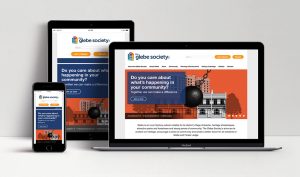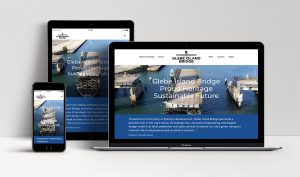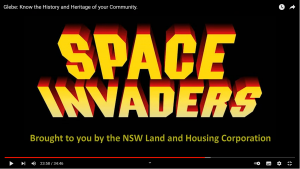By Allan Hogan, Convenor, October 2021, from Bulletin 8 of 2021
Members of the Subcommittee in 2020-2021 were Ashley Brinson, Tarny Burton, Bruce Davis, Sarah Fogg, Carole Herriman, Allan Hogan, Lyn Milton, Virginia Simpson-Young and Phil Young.
Allan took over from Virginia as convenor in May this year.
During the past year, the major activity of the Communications Subcommittee has been in improving our websites. In addition to this, we have continued to coordinate and oversee the Society’s various media – the Bulletin, websites, Facebook pages, Twitter, YouTube, Update Email to members and Eventbrite. We have also sought to assist the Society’s Management Committee and subcommittees with their communications.
The Bulletin
 Due to COVID-19, the Bulletin mailout team was unable to meet until April this year. Paper copies of the Bulletin were produced in April, May and June before having to revert to email-only Bulletins. For those three months, our mailout team, led by Phil Young, comprised Bruce Davis, Edwina Doe, Bryan Herden, Carole Herriman, Alison McKeown and Jude Paul. Five additional people joined the delivery team ensuring a substantial reduction in postage costs.The Bulletin continues to be the main way the Society communicates with its members. Content for the Bulletin is provided by Management Committee members and a handful of regular contributors who are not on the Management Committee, including Lyn Collingwood and Rodney Hammett. Photos are often provided by Phil Young, Phil Vergison and Virginia Simpson-Young. The Bulletin is edited by Virginia Simpson-Young and proofread by Edwina Doe, Emily Booker and Sybil Jack.
Due to COVID-19, the Bulletin mailout team was unable to meet until April this year. Paper copies of the Bulletin were produced in April, May and June before having to revert to email-only Bulletins. For those three months, our mailout team, led by Phil Young, comprised Bruce Davis, Edwina Doe, Bryan Herden, Carole Herriman, Alison McKeown and Jude Paul. Five additional people joined the delivery team ensuring a substantial reduction in postage costs.The Bulletin continues to be the main way the Society communicates with its members. Content for the Bulletin is provided by Management Committee members and a handful of regular contributors who are not on the Management Committee, including Lyn Collingwood and Rodney Hammett. Photos are often provided by Phil Young, Phil Vergison and Virginia Simpson-Young. The Bulletin is edited by Virginia Simpson-Young and proofread by Edwina Doe, Emily Booker and Sybil Jack.
In response to a President’s email informing members about the Society’s finances, two members generously volunteered to personally print (at their own cost) and hand-deliver the small number of paper Bulletins required for members who don’t have email.
Sadly, the Editor of the Bulletin, Virginia Simpson-Young, has indicated that she wishes to step down from the position at the end of this year. Her decision was accepted with great regret by the Management Committee, who expressed its appreciation and gratitude for the skill, energy and dedication she has brought to the task. Virginia will be a hard act to follow, and the Management Committee will have a difficult job finding her successor.
The Glebe Society Update Email
One of the Subcommittee’s roles is the compilation and distribution of the Glebe Society Update emails that are sent on an occasional basis to those members who have provided us with an email address. The Society has been very active over the past year in terms of campaigns, so the Update email was more than occasional. The number of our members who can now be contacted by email is 98.5%.
Glebe Society Websites
The Society has three websites – our main one (www.glebesociety.org.au), one for the Glebe Island Bridge (https://www.glebeislandbridge.com/) and the Glebe Walks website (https://glebewalks.com.au/). Each can be viewed on your computer, tablet or smart phone – particularly useful in the case of the Glebe Walks site. A website on the 50th anniversary Festival in 2019 is inching ever-closer to completion. The site presents – in a very attractive fashion – images, videos, documents and publications from the Festival. It will be well worth the wait. The Subcommittee hopes to substantially complete the website in time for the AGM.
Main Glebe Society website

Over 33,000 users accessed our website in the year ended September 2021, and almost all of them were first time visitors, although many of them didn’t linger for a long time. The average session duration was one minute and forty three seconds, which suggests that users followed a search engine to a particular page, read it, and moved on. We’re thinking about ways to encourage them to browse our site.
After the Home page, the most viewed page on the website was ‘Who Lived in My Street?’ Another very popular search was ‘Michael Nicholas Hurley’, the underworld figure who was fictionalised in the TV series Underbelly, and who lived at 23 Toxteth Rd. ‘How to Research Your House’ had over 670 visitors to its page and the Sze-Yup Temple page prompted almost a thousand views. And as a clear guide to how people are receiving their digital information these days, mobile phones are now ranking with computers as the most used device to access our site.
Members may have noticed that the website has had a freshen-up and looks marvellous. The changes are not entirely cosmetic – the re-vamped site is easier to use. Work to improve the website is on-going, so expect further improvements in future. The website upgrade project is being managed by Sarah Fogg from the Subcommittee with input from Virginia Simpson-Young, and the hands-on work is being undertaken by webmaster Tarny Burton. The work towards the improved website began early last year with a consultation process from which a new information architecture was drawn up and refined. The first stage for implementing the improvements was for Tarny to redesign the front page and the appearance of all pages on the website and a web developer was engaged to build it. The website upgrade team will continue to make changes as time and funds permit.
 Glebe Island Bridge website
Glebe Island Bridge website
To support the ‘Glebe Island Bridge; Give It Back’ campaign, the website that the Glebe Society had created for the Bridge (https://www.glebeislandbridge.com/) was brought up to date. The Society is now able to easily post updates on the progress of the GIB campaign.

Glebe Society Facebook pages
The Society’s Facebook pages are also maintained by the Communications Subcommittee; these are the main page (www.facebook.com/TheGlebeSociety) and the Glebe Island Bridge page (http://www.facebook.com/GlebeIslandBridge).
A Facebook post is made about most content uploaded to the website. A post usually consists of a short paragraph, an image and a link to the relevant page on our website. The vast majority of these Facebook posts are about items in the Bulletin. In this way, our content reaches a wider audience.
Our Facebook following has continued to increase each year. Currently we have 1,400 followers which is up from around 1,230 about this time last year. Our Facebook followers have a different profile from our members’, being a fair bit younger. Over half of our Facebook followers are aged under 45 years and almost three-quarters are aged under 55. Only 13% are aged over 65. The Society is keen to engage with the diversity that exists in 2037, and Facebook is a great means of reaching a younger audience.
The post with the greatest reach in the last year or so was our April post on the spot rezoning of part of the St Phillip’s Estate. 2,700 people were reached and 193 of them clicked on the link to Ian’s article on our website. Fourteen people on-shared the post.
One of the purposes of having a Facebook page is to encourage readers to click through to our website where, hopefully, they will spend some time looking around. The post with the largest number of clicks through (362) to our website was the July Mystery Photo of the top of Ferry Rd. In general, the most popular posts were the Mystery Photos and posts about planning issues.

Glebe Society’s Twitter account (@glebesociety)
The Society also uses Twitter to increase its reach and influence. We have some 550 followers, an increase of 5% over the year. On average we put out about four tweets per month (up to 13), mostly promoting key stories appearing in that month’s Bulletin, but also our campaigns and other local matters. Our tweets about Glebe Island Bridge, the December 2020 rally and new website, the proposed closure of Laurel Tree House child care, vaccination clinics in Glebe, plans for Blackwattle Bay, the Bridge Rd cycleway and our letter to the Sydney Morning Herald about overdevelopment were the ones most ‘retweeted’, ‘liked’ or with the largest number of ‘impressions’ (ie the number of people our tweets are potentially seen by, which is a function of how active our followers are, as well as the level of interest in our tweets).
Glebe Society’s YouTube Channel
In the last year or so, the Society has uploaded some interesting videos to our YouTube channel (https://www.youtube.com/channel/UCBT7r3R0FaaI_dK6kV9sCbg). These include:
- A video called ‘Save the GIB Campaign 2020’ of the rally held on 3 December 2020 to save the Glebe Island Bridge.
- The video about threats to Glebe created by University of Sydney students called ‘Treasure in the City’.
- We have uploaded to both Facebook and YouTube six videos created by Planning Convenor, Ian Stephenson, that highlight the history and heritage of Glebe and Forest Lodge as well as the threats our community faces from over development. Each of the videos has its own message and the series ends with a call to action to donate to a fighting fund.
Future plans for the Communications Subcommittee

During the year members of the Communications Subcommittee have had broad discussions about the future policies and strategies that should guide our communications activities. These discussions have included the editorial style and policies of the Bulletin; defining the target audience for our communications; and the priorities for our community as we move towards the year 2037 – a symbolic and a practical focal point. None of these discussions have resulted in concrete proposals, but they are important matters for consideration, not just for the Communications Subcommittee but for the Society as a whole. In the months ahead the Communications Subcommittee will reach out to members for submissions and suggestions on these topics.










There are no comments yet. Please leave yours.